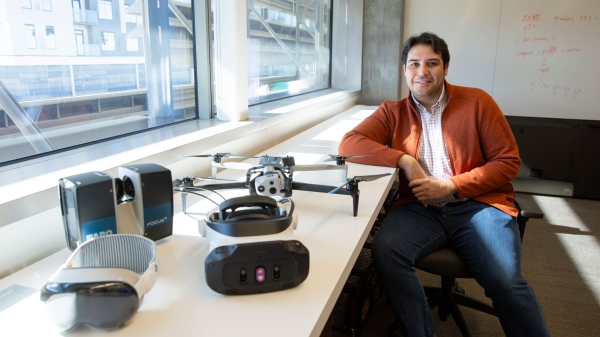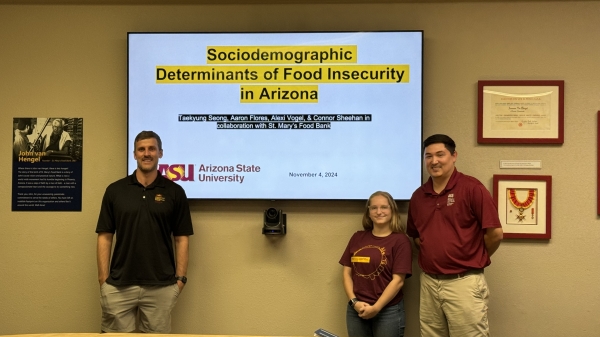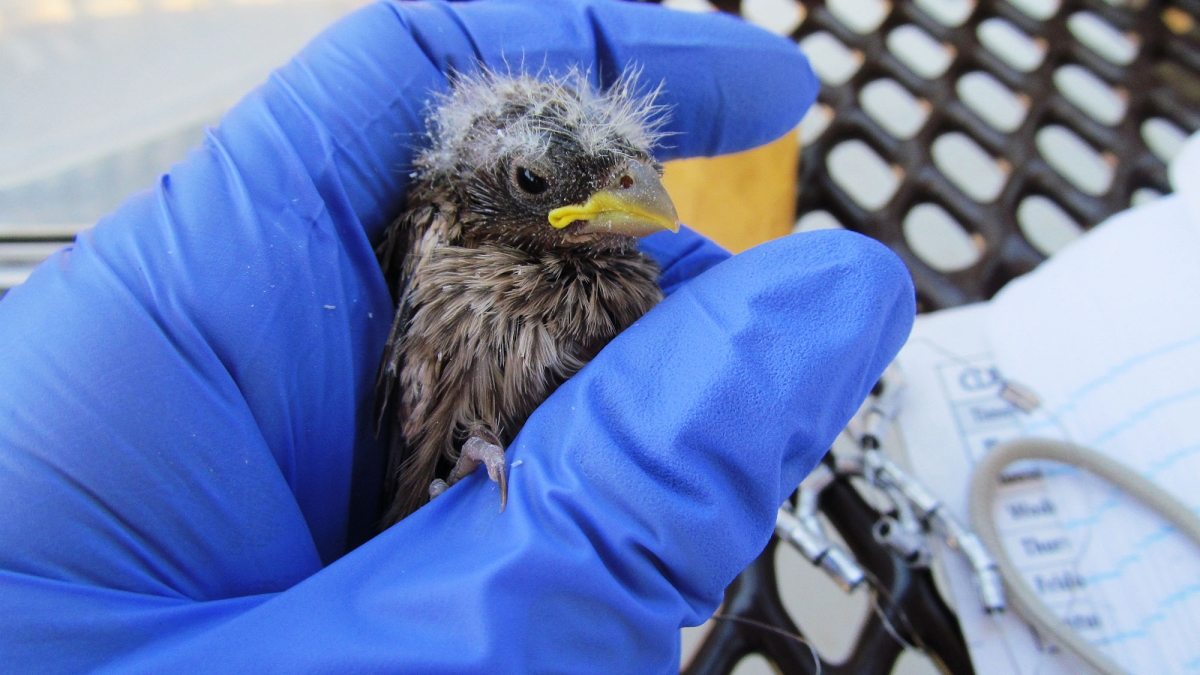Cities are slowing the pace of life for birds — and maybe humans.
A visiting scientist at Arizona State University is investigating why some birds adapt so well to life in cities, and how urban living affects them.
“I’m studying urbanization using birds as a model species to understand evolutionary processes that are triggered by cities popping up all over the world,” said Tuul Sepp, a postdoctoral researcher visiting from Estonia.
Many species of birds don’t like urban environments and don’t adapt to them well. Other species thrive in cities. One of them is the house finch.
Sepp is studying what makes the house finch able to adapt to city life so well. Do urban and rural house finches differ? And, on a longer scale, what evolutionary changes might we expect to see as house finches continue to live in cities?
“If we understand how urbanization affects house finches, maybe we can make some general assumptions even of how urbanization affects humans, because we are also an animal species moving into cities,” she said.
There are curious parallels between birds and what is observed in humans. Birds live longer in cities. They have better survival rates. The same is true for people; they have fewer accidents and better access to health care, for example. If cities make life easier, they can also induce other changes. Birds have fewer chicks in cities, for instance.
“This could be because they are living longer, and they know that they will have another chance,” Sepp said. “They don’t have to put out everything they have in the first breeding season.”
Rural people have more children than urban folks, too.
“Could it be because they’re expecting in an evolutionary sense an increased risk of dying?” she said. “That’s a speculative parallel I’m going on here.”
Urban birds have fewer parasites and invest less in feather coloration. More color shows off for potential mates, but it’s also an investment in reproduction, because they can’t use the pigments in their feathers for other body functions.
“This is what I’m testing here: that cities actually slow the life of birds, and maybe also for humans,” Sepp said. “Urban birds invest more in their health, and rural birds invest more in reproduction.”
Putting all this together — longer life span, smaller reproductive success, increased investment in self-maintenance as opposed to reproduction, all happening in cities — is a novel theory.
The first year of the study will be conducted at ASU. Sepp has placed nesting boxes on the downtown and Tempe campuses for urban samples, and at South Mountain Park and in Estrella Mountain Regional Park for rural samples. The second year of the study will be conducted in Estonia, a completely different environment.
Sepp is conducting the study out of Kevin McGraw’s lab. McGrawMcGraw is in the School of Life Sciences, which is part of the College of Liberal Arts and Sciences. is an integrative behavioral ecologist who studies the colors of birds to understand the costs, benefits and evolution of visual signals. He has been conducting a long-term study on urban impacts to birds since 2008.
Sepp’s study is funded by the European Commission's Horizon 2020 project, a European Union research and innovation program that supports basic and applied research and development and technological innovation across a wide range of disciplines.
Top photo: Tuul Sepp, a postdoctoral researcher visiting from Estonia, studies house finches like this nestling from her nest box at South Mountain Park in Phoenix. She says cities appear to be slowing the life of the house finches she has observed. It could be true of humans, too, she said. Photo courtesy of Tuul Sepp/ASU
More Science and technology

Teaching construction realities with virtual environments
Visiting a construction site is a valuable learning opportunity for students who want to one day work in the industry. Experiencing the sights, sounds and other sensory elements of an active…
ASU, Mexico partner to build next generation of chipmakers, drive semiconductor innovation
Thousands of college students in Mexico will soon have the opportunity to enroll in Arizona State University’s new, free online course to learn the fundamentals of microelectronics and…

ASU, St. Mary’s Food Bank partner to tackle food insecurity in Arizona
Arizona State University and St. Mary’s Food Bank (SMFB) have joined forces to create an interactive data dashboard that tracks and maps food insecurity rates across Arizona. This innovative tool…
